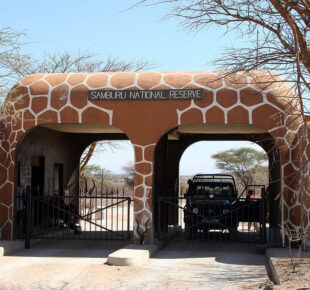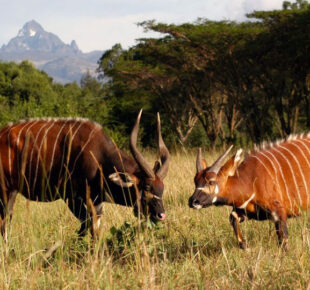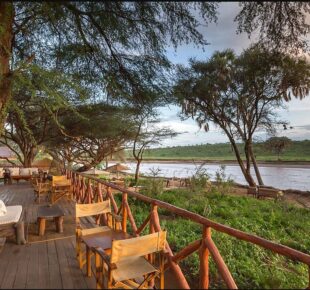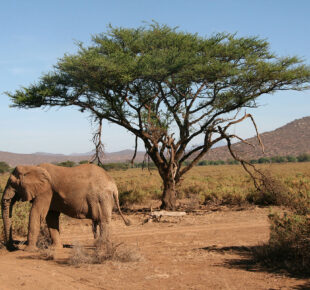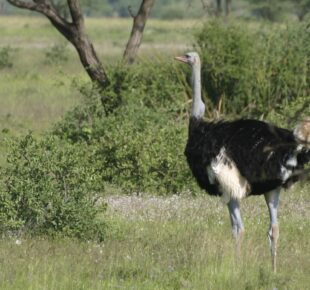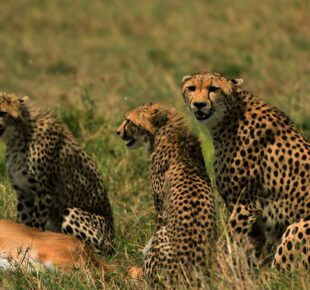``Wilderness safari travel at its best``
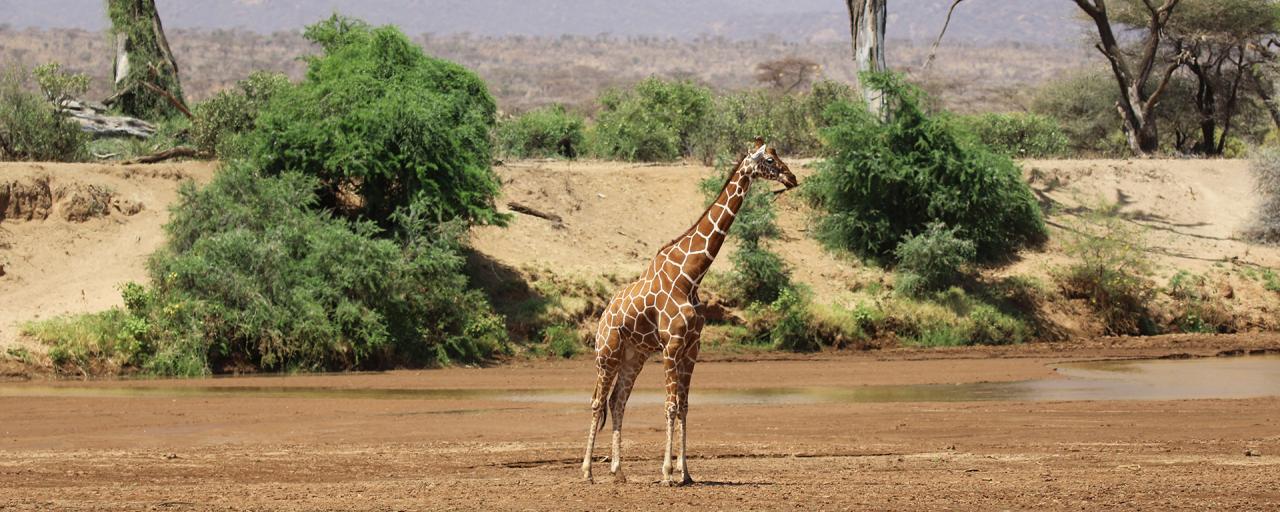
Hot and arid, Samburu National Reserve lies on the fringes of the vast desert that was once known as the ‘Northern Frontier District’, whose heat-scorched scrublands extend all the way to the jade-green waters of Lake Turkana and beyond. As a Kenya safari, it offers an evocative cocktail of uniquely contrasting habitats; veering from the stark cliffs and boulder-strewn scarps of the central Samburu Reserve to the lush swamps of neighbouring Buffalo Springs.
Kenya Safari Fact File
Altitude: 850-1,230 meters above sea level.
Area: 165 sq km.
Location: Samburu District, Rift Valley Province.
Distance from Nairobi: 320 km north-east of Nairobi.
Gazetted: The reserve was established in 1948 as the Samburu-Isiolo Game Reserve, part of the once extensive Marsabit National Reserve, and became a National Reserve in the 1960s.
Climate: The reserve lies in a hot and dry semi-arid area.
Traditionally the long rains fall March/April and the short rains October/November.
Vegetation: The vegetation of this outdoor wilderness varies between acacia woodland, bushland and scrubland and narrow riverine woodlands.
Wildlife Includes: Elephant, cheetah, reticulated giraffe, oryx, gerenuk, vervet monkey, zebra, buffalo and crocodile.
Birds: Over 380 species have been recorded on the wilderness trails.
Roads: 4WD is recommended for the journey to and within the reserve although 2WD vehicles with good ground clearance can be used outside the rainy seasons.
Gates: In addition to the main Archer’s Gate, there is Uaso Gate which leads to Buffalo Springs Reserve, and West Gate which leads to Wamba.
Activities: this unique wilderness park offers; wilderness camps, wilderness trails, unique Kenya wildlife, safari lodges and perhaps one of the most unique wilderness adventure ‘holiday Kenya’ experiences available amongst the many African tours on offer.
The farthest north of the popular parks.
Uncompromisingly rugged and vividly beautiful, the wilderness area of Samburu is essentially a lava plain theatrically punctuated by dry riverbeds (wadis), steep-sided gullies, rounded hills and harsh outcrops of ancient basement rocks, which form into isolated inselbergs. Roughly in its centre rises the stark outline of Koitogor Mountain, and 30 kms beyond its northern borders rise the towering red granite walls of Mount Lololokwe (1,853 m).
Domain of doum palm and desert rose
Featuring mainly sandy or gravely soils the reserve abounds in large tracts of Acacia tortilis woodland, and along the banks of the Ewaso Ng’iro River and its tributaries there is a narrow band of riverine forest with magnificent Acacia elatior , Tana River Poplar (Populus ilicifolia ) and Doum Palm (Hyphaene compressa ). The uniform khaki of the shrub is also enlivened by the occasional bulbous trunk and brilliant pink bloom of the indigenous succulent known as the ‘Desert Rose’ (Adenium obesum ).
Elephant encounters
Prey to the harsh dictates of a dry country ecosystem, the reserve is prone to large variations in the animal populations as they move about in search of water and pasture. However, elephant encounters are common as large herds roam the reserve and they are best seen crossing the river, or returning to its banks at dusk to bathe.
Plentiful predators
Samburu holds healthy numbers of lions, leopards and cheetahs as well as spotted and striped hyenas, bat-eared foxes and common genets. In the heat of the day, droves of banded and dwarf mongooses scurry in voracious hunting bands; at night golden and black-backed jackals prowl and aardwolves are occasionally seen.
Dwellers of the dry shrub
Samburu is one of the few wilderness areas in Kenya where one can view the Grevy’s zebra, which with its rounded ‘Mickey Mouse’ ears is notably different from its more common cousin, the Burchell’s zebra, which also populates the reserve. Other browsers of the thorny shrub include the increasingly uncommon reticulated giraffe and the rare Beisa oryx, as well as elands, impalas, Bright’s gazelles (the pale northern species of Grant’s gazelle) and gerenuks. Elsewhere rooting warthogs and Kirk’s and Guenther’s dik-diks can be seen, and in small numbers both lesser and greater kudus.
Denizens of the Ewaso Ng’iro River
The lifeblood of this dust-dry desert region, the 32 km Ewaso Ng’iro River meanders in mud-brown loops throughout the reserve and is home to plentiful pods of snorting and chortling hippos. On its raised sandbanks immense Nile crocodiles bask, remaining stock still, utterly camouflaged and menacingly patient. Amid the dense riverside thickets impala, common waterbuck and buffalo lurk.
A brilliance of birdlife
Samburu’s birdlife is so abundant that over 100 species can be spotted in a day. Perhaps most noteworthy of the sightings is the rare blue-shanked Somali ostrich; the most memorable, the flash of coral rump that flags the flight of the white-headed buffalo-weaver. Secretary birds are plentiful, as are bands of bustling helmeted and vulturine guinea fowls. Along the river, storks feed and sand grouse congregate at dusk. Both red-billed and Von der Decken’s hornbills are common.
Rugged raptor realm
The Reserve’s characteristically rugged cliffs and starkly rising inselbergs provide the ideal habitat for raptors, which range in size from the tiny pygmy falcon to the giant martial eagle. Verreaux’s eagle owls also hunt the rivers
| Economy | Sentrim Samburu Lodge |
| Comfort | Samburu Simba Lodge |
| Luxury | Samburu Sopa Lodge, Ashnil Samburu Camp, Sarova Shaba, Samburu Game Lodge |
